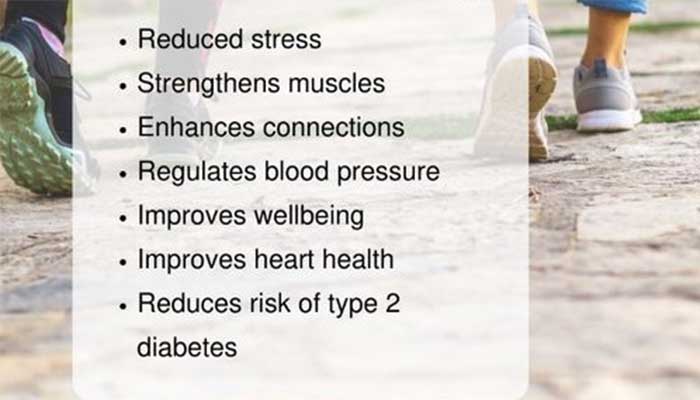
Exercise is essential for maintaining cardiovascular health. Walking and running are two of the most popular kinds of aerobic activity and both provide considerable heart health advantages. However, the debate about which is superior is still ongoing. This guide compares walking with running, exploring their effects on heart health and providing insights into which might be the best option for you.
Understanding Heart Health Benefits of Exercise
Regular aerobic exercise strengthens the heart muscle, improves circulation, and lowers cholesterol and blood pressure. Exercise lowers the risk of heart disease, stroke, and other cardiovascular disorders. Walking and running, both weight-bearing exercises, improve cardiovascular endurance, lower resting heart rate, and boost oxygen efficiency.
Arguments in Favor of Walking
Walking is a low-impact activity that offers significant heart health advantages without putting too much strain on the body. Here’s are some aspects that how it promotes cardiovascular health.
Improves Cardiovascular Fitness
- Walking at a quick speed boosts heart rate and circulation.
- Strengthens the heart muscle, improving pumping efficiency.
Reduces Blood Pressure and Cholesterol
- Lowers blood pressure and cholesterol.
- Walking can lower blood pressure and improve HDL cholesterol, preventing plaque development in arteries.
Supports Weight Management
- Regular walking while less strenuous than running, burns calories and benefits in weight management, therefore, reducing cardiac stress.
Decreases Stress and Enhances Mental Health
- A healthy walk decreases stress hormone levels, reduces anxiety, and improves general mood, all of which lead to better heart health.
Reduces Risk of Heart Disease
- According to study, those who walk on a daily basis have a lower risk of developing heart disease than people who sit all day.
Arguments in Favor of Running
Running is higher-intensity activity with greater cardiovascular benefits. It uses more muscles, raises the heart rate dramatically and burns more calories. Here’s are some aspects that why running is beneficial.
Enhances Cardiovascular Strength More Rapidly
- Running boosts heart rate greater than walking, therefore, leading to stronger cardiac function.
- It improves endurance and oxygen efficiency which are critical for long-term heart health.
More Effective at Reducing Blood Pressure and Cholesterol
- High-intensity activity such as jogging, helps lower blood pressure faster than moderate-intensity exercise.
- Running improves healthy cholesterol levels more than walking.
Helps in Weight Loss
- Running burns twice as many calories per minute as walking, making it a better option for weight loss.
- Maintaining a healthy weight lowers the risk of cardiovascular disease, diabetes, and hypertension.
Increases Longevity and Reduces Heart Disease Risk
- Studies demonstrate that runners are less likely to get cardiac disease than non-runners.
- Even short-duration runs provide significant cardiovascular advantages.
Strengthens Bones and Muscles
- Running’s high impact promotes bone density and reduces the incidence of osteoporosis.
- Stronger bones and muscles improve general physical fitness including circulation and heart function.
Walking vs Running – Which is Best for You?
While both walking and running have significant heart health benefits, the optimum option depends on a variety of factors.
Fitness Level and Goals
- Walking is a safe and sustainable workout option for beginners and those with joint issues.
- Running might be a better option if you want to lose weight and increase your cardiovascular strength quickly.
Existing Health Conditions
- People with arthritis, joint discomfort, or obesity might find walking more comfortable and sustainable.
- Running is more beneficial to those who have no mobility concerns and want to exercise at a higher level.
Time Availability
- Running burns more calories and yields faster effects whereas walking takes more time but has equivalent cardiovascular advantages and is more convenient for individuals with busy schedules.
Risk of Injury
- Running increases the chance of injury because of the impact on joints, knees, and tendons.
- Walking is easier on the body, making it a safer alternative for long-term adherence.
Combining Walking and Running for Optimal Heart Health
For those looking for a more balanced approach, combining walking and running into a training routine can bring the best of both.
- Interval training (walking for two minutes and running for one minute) improves cardiovascular fitness and reduces impact-related injuries.
- Beginners can gradually go from walking to brief running sessions.
- Flexibility and Sustainability – Adapting exercise intensity to energy levels and fitness advancement promotes long-term commitment.
Walking and running both improve heart health and the optimal option relies on personal fitness levels, health problems, and preferences. Walking is a great low-impact way to maintain cardiovascular fitness but running provides faster and more intense results. Consistency is essential for good heart health whether you walk, run, or do both. The most crucial element is to keep active and incorporate physical activity into your daily routine.

Leave a Reply